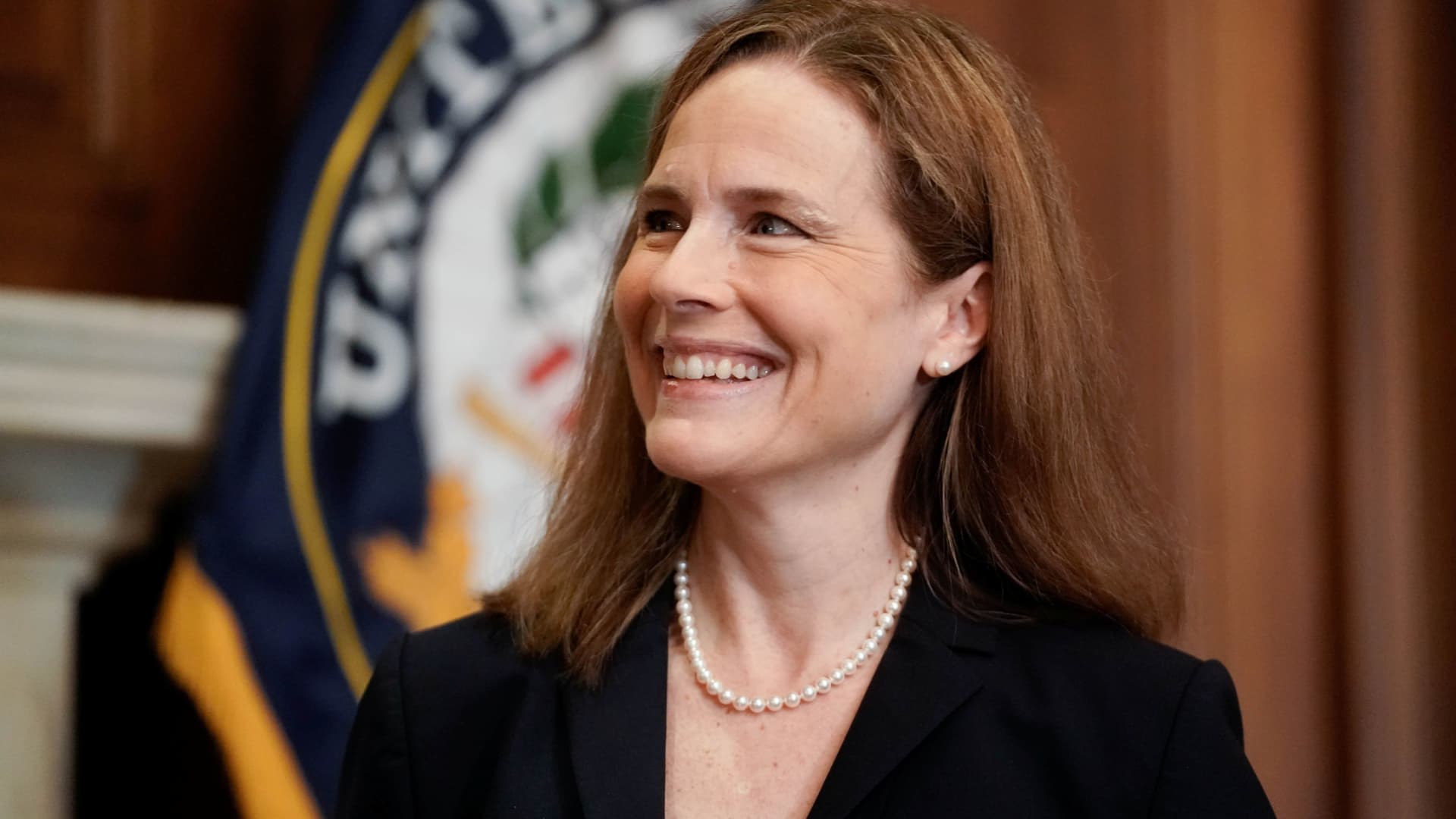Products You May Like
The Supreme Court on Friday rejected a second request to block the Biden administration’s student loan debt relief program.
Justice Amy Coney Barrett denied an emergency application to block the program brought Tuesday by the Pacific Legal Foundation, a conservative legal group, on behalf of two borrowers in Indiana.
On Oct. 20, Barrett rejected a similar request from the Brown County Taxpayers Association in Wisconsin.
Barrett is responsible for such applications issued from cases in the 7th U.S. Circuit Court of Appeals, which includes Indiana and Wisconsin.
Friday’s decision has little practical effect. For now, student loan forgiveness remains on hold from a challenge brought by six Republican-led states. An appeals court judge in the 8th Circuit in October granted the states’ emergency petition to stay the plan pending consideration of the states’ appeal.
More from Personal Finance:
Treasury announces new Series I bond rate of 6.89%
Education Department to reduce ‘red tape’ on public service loan forgiveness
26 million borrowers have applied for student loan forgiveness
Since the White House in August unveiled its plan — to cancel $10,000 in student loans for most borrowers and up to $20,000 for those who received Pell Grants for low-income families — it has faced at least six lawsuits.
Close to 26 million Americans have already applied for student loan forgiveness, and the Biden administration has approved 16 million of the requests, the White House said Thursday. The administration has continued to encourage borrowers to apply for relief despite the recent challenges.
Caleb Kruckenberg, an attorney at Pacific Legal Foundation, in an emailed statement said, “We’re disappointed by today’s denial but will continue to fight this program in court.”
“Practically since this program was announced, the administration has sought to avoid judicial scrutiny,” Kruckenberg said. “Thus far they have succeeded. But that does not change the fact that this program is illegal from stem to stern.”
‘Standing’ remains an issue for forgiveness challenges
The main obstacle for those hoping to foil the president’s action has been finding a plaintiff who can prove they’ve been harmed by the policy, experts say.
“Such injury is needed to establish what courts call ‘standing,'” Laurence Tribe, a Harvard law professor, recently told CNBC. “No individual or business or state is demonstrably injured the way private lenders would have been if, for instance, their loans to students had been canceled.”
In that light, Barrett’s decision to reject the Pacific Legal Foundation’s request isn’t surprising, said higher education expert Mark Kantrowitz.
“There were very few substantive differences between their original lawsuit and the new lawsuit, which spells a lack of legal standing,” he said.
In the Pacific Legal Foundation case, Indiana-based plaintiffs Frank Garrison and Noel Johnson said that they would be financially harmed if some of their student debt was automatically forgiven because they would incur state taxes on that canceled debt.
Indiana is one of several states that has said forgiveness would be taxable at the state level, and potentially the county level.
Both Garrison and Johnson are lawyers; Garrison works for the Pacific Legal Foundation and Johnson for the Public Interest Legal Foundation. They are pursuing relief through the public service loan forgiveness program, which allows those who work for the government or specific nonprofits to get their debt canceled after 10 years, or 120 payments. PSLF forgiveness is not considered taxable income.
After the initial lawsuit, the Education Department said that borrowers can opt out if they do not want to have their loans forgiven.
Student loan borrowers ‘in limbo’
As legal challenges mount, financial advisors say borrowers are left wondering where student loan forgiveness stands.
“The interference of the courts is really troubling because people are looking for certainty with what’s happening with their student loans,” said Ethan Miller, a certified financial planner and founder of Planning for Progress in the Washington, D.C., area. Miller specializes in clients with student loans.
“There was a plan that clearly outlined the steps,” he said. “And yet everyone’s been put in limbo.”
